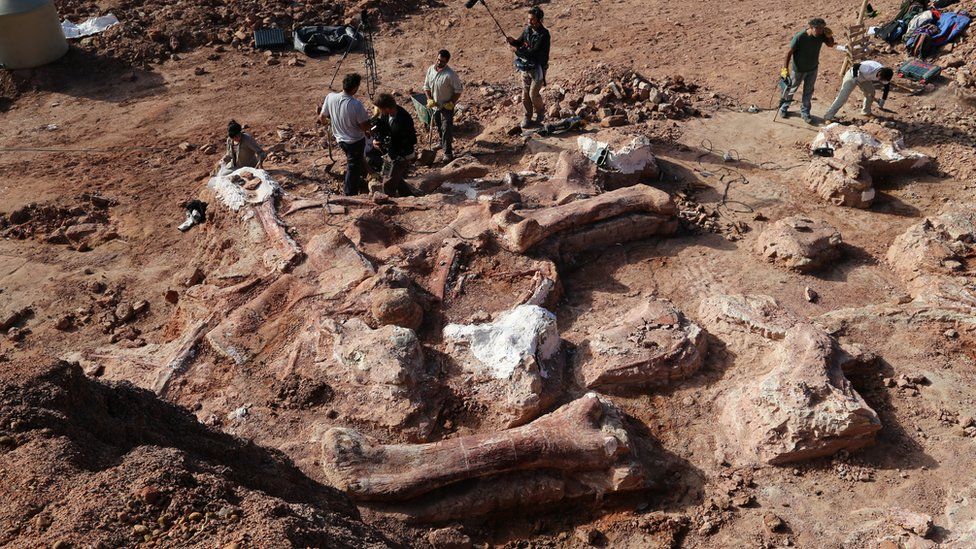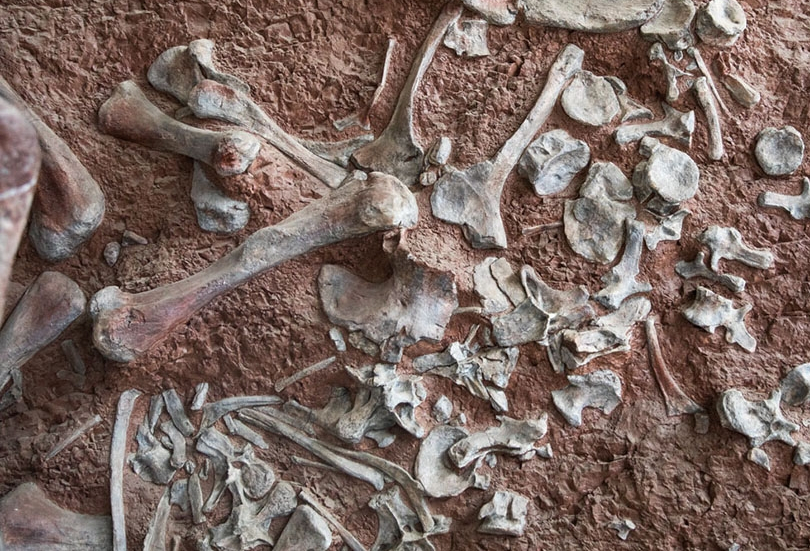On April 28, the Argentine Museum of Natural Sciences (MCAN) said that a team of archaeologists unearthed the fossil of a dinosaur of the genus megaraptor.
This is also believed to be the fossil of one of the last carnivorous dinosaurs on Earth.

According to MCAN, scientists from Argentina’s National Council for Scientific and Technical Research (Conicet) and two paleontologists from Japan discovered the fossil at an archaeological site in the province of Santa Cruz, Southern Argentina, mid-March 2020.
This carnivorous dinosaur was named “Maip Macrothorax” by researchers – derived from the name of the evil Maip in the mythology of the South American indigenous people of Tehuelche.

Archaeologist in charge of the excavation team Mauro Aranciaga said that Maip Macrothorax lived in the southernmost Patagonian region of Argentina during the late Cretaceous period (about 70 million years ago), the last period when dinosaurs existed on Earth.
Paleontologists determined that Maip macrothorax was 9-10 meters long and weighed about 5 tons. To support the relatively large weight, Maip macrothorax’s spine was made up of giant vertebrae connected by a complex system of muscles, tendons and ligaments that allowed the dinosaurs to eat. This meat stands upright on two legs after moving.

Unlike the Tyrannosaurus rex, which was also a large but heavy carnivore, Maip macrothorax had a much lighter skeleton. Aranciaga explained that Maip macrothorax’s bones are not solid but have many holes inside, like a hollow brick compared to a solid brick. This makes their skeleton lighter and slimmer. In addition, this species has a long tail and legs, proving that they can run fast and keep good balance.
The most striking feature of the Maip macrothorax is their long and large forelimbs, with claws up to 35-40cm long. Scientists deduce that Maip macrothorax can grasp and tear prey into pieces. Claws are considered the main weapon of Maip macrothorax, because their teeth are sharp but small in size.

Argentina is known as the “dinosaur graveyard.” Many fossils dating from the Triassic, Jurassic and Cretaceous periods found in this South American country have never appeared in the Northern hemisphere.
In 2019, the country’s scientists discovered a dinosaur graveyard with at least 10 fossil skeletons dating back about 220 million years in the western province of San Juan.
Source: vtc.vn








